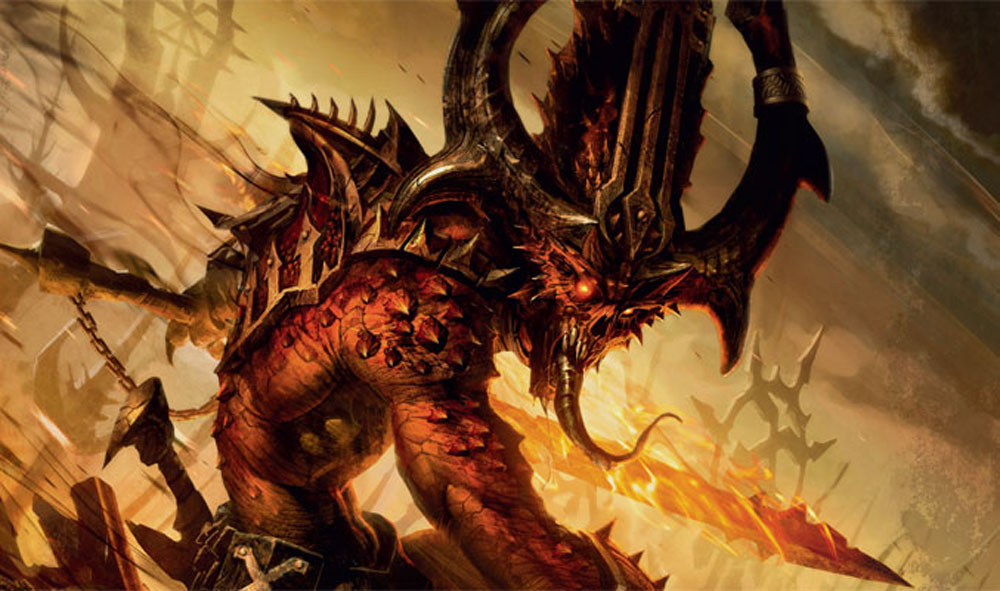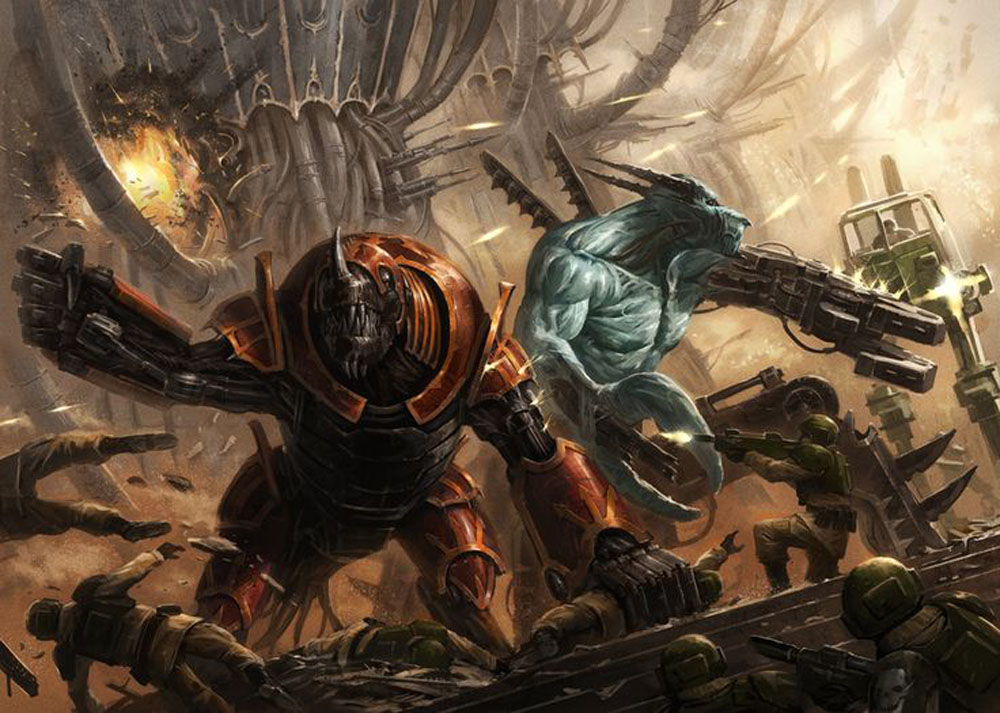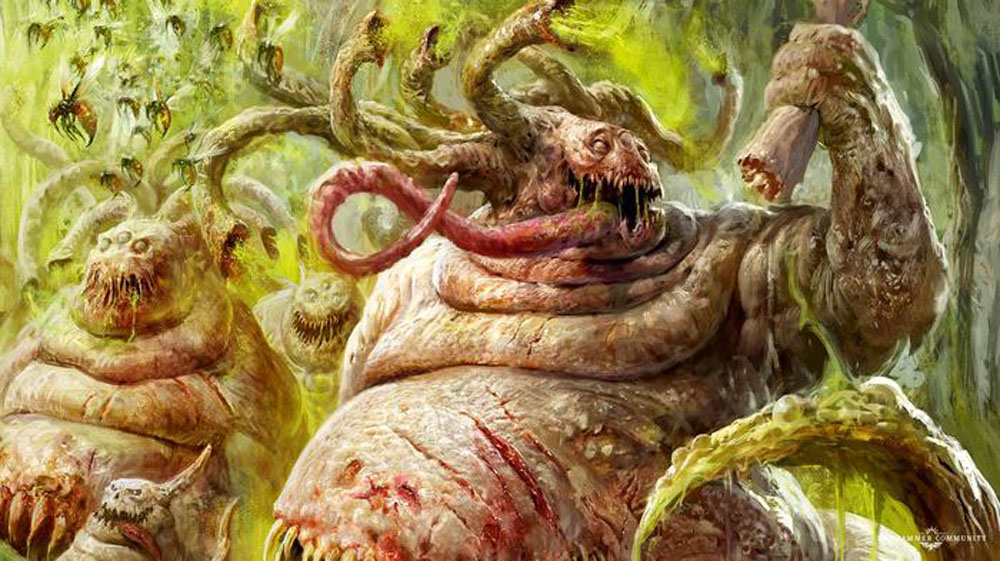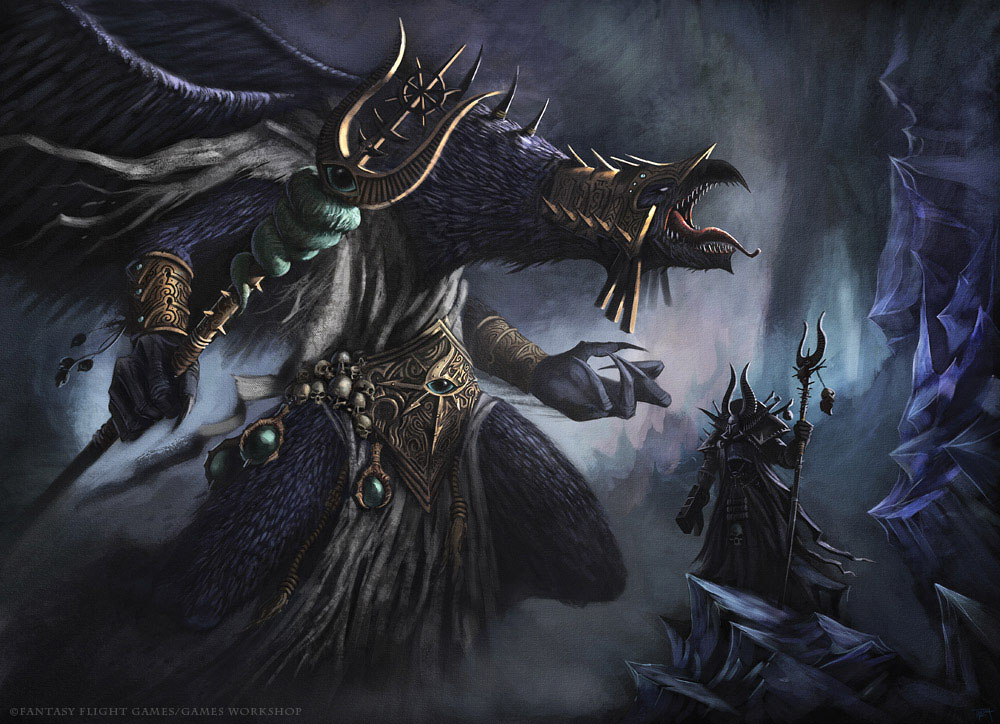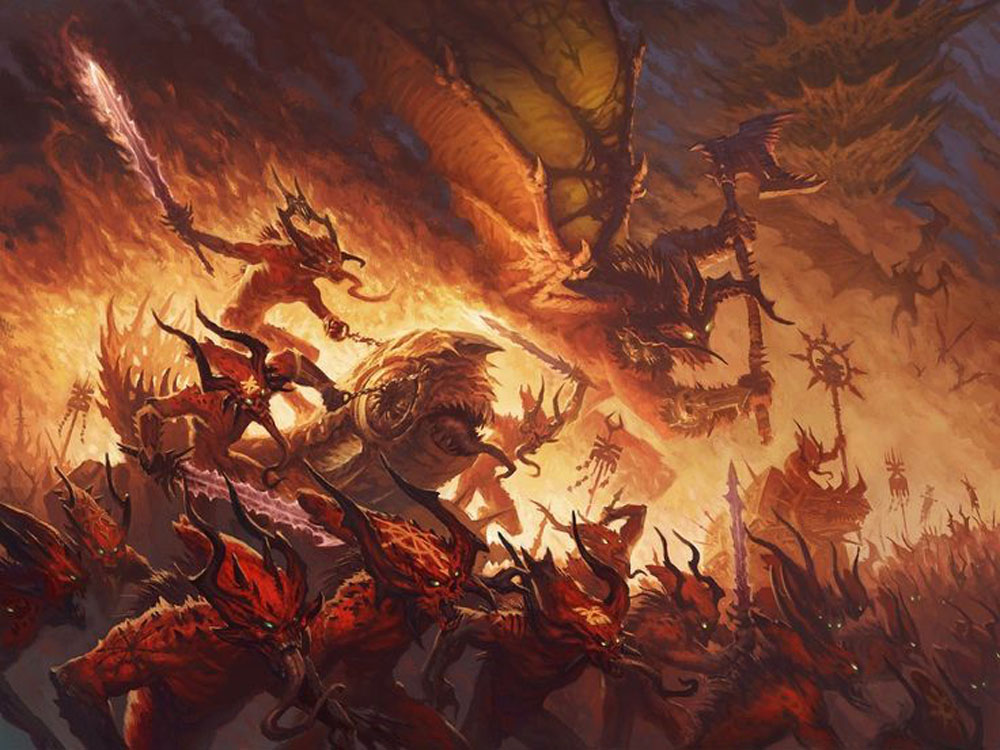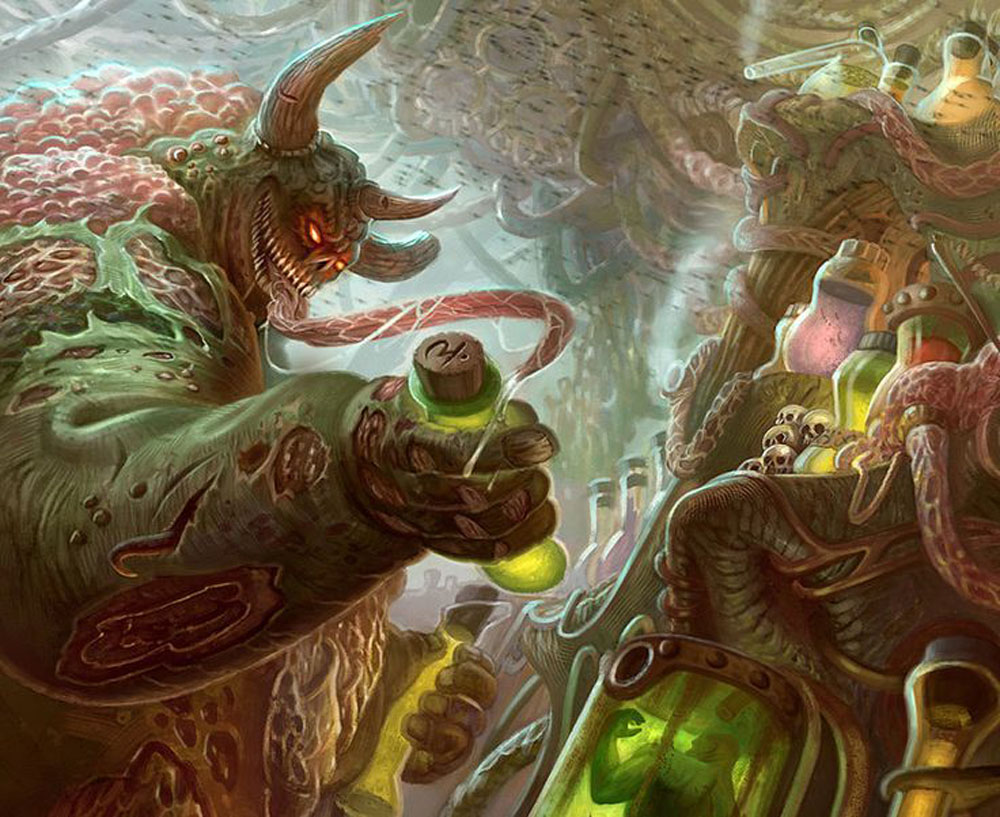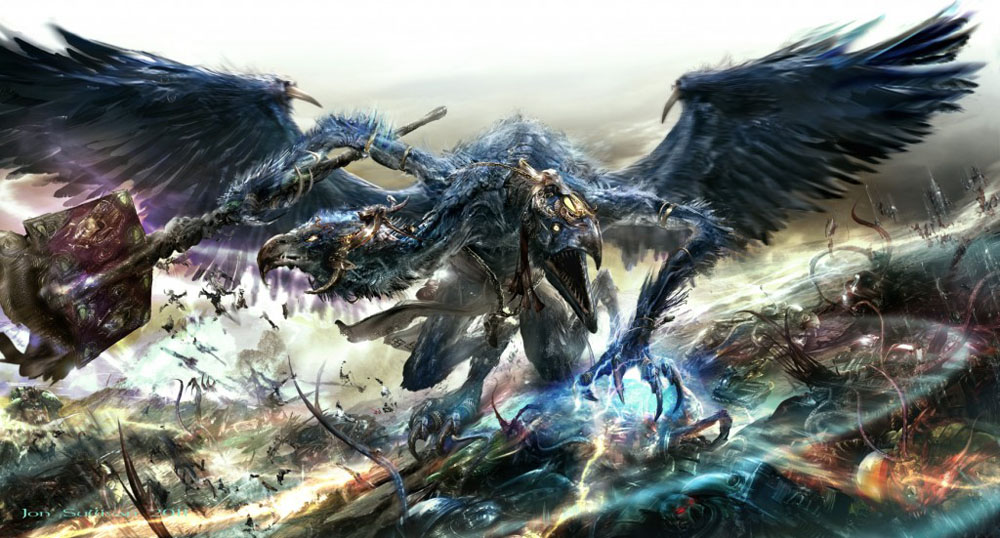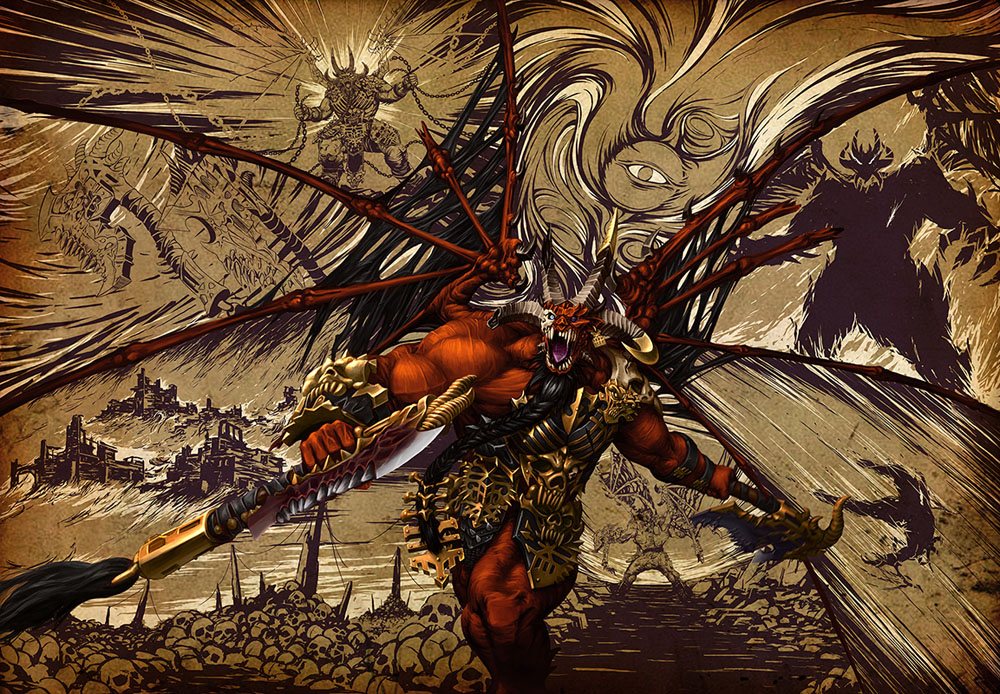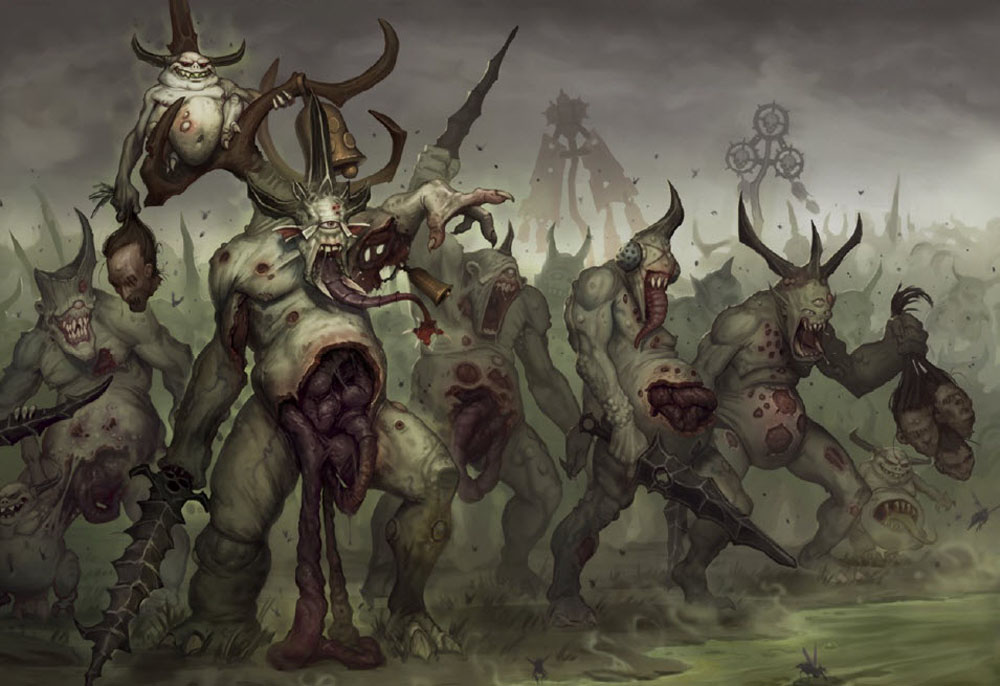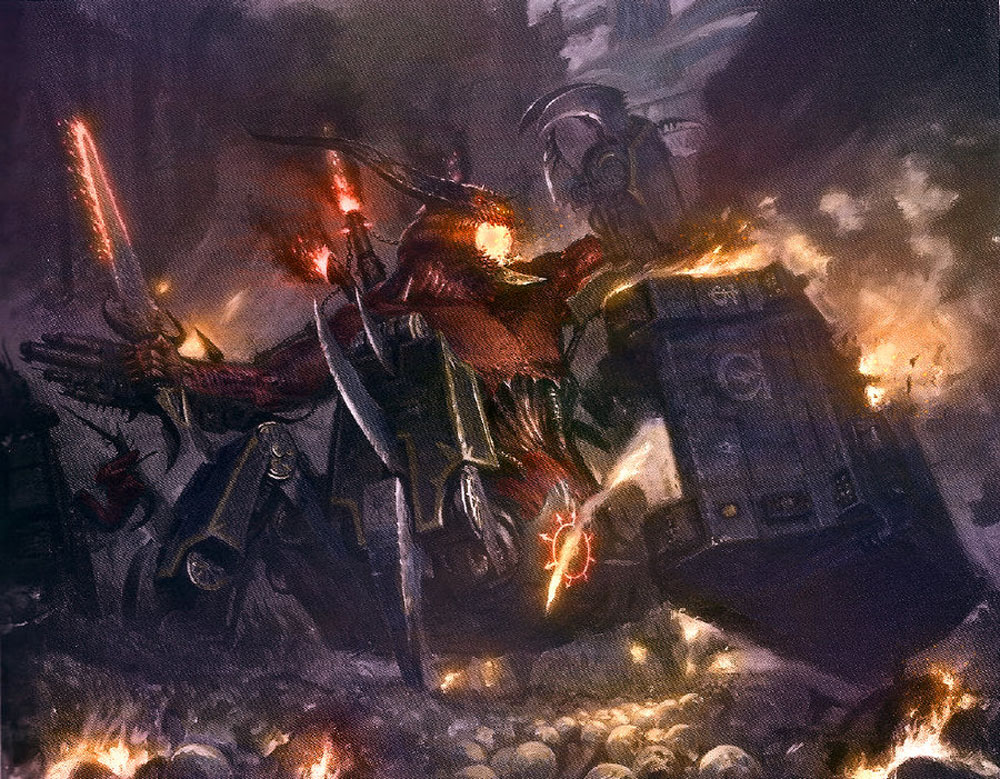The rules for Daemons have always been a challenge for GW game designers. In general, since the separation from the CSM codex, this army was very rarely balanced. Either too powerful or vice versa, completely incapable. So, by the end of the 7th edition, it was one of the top-ranking armies, even though the codex itself was not reissued for this edition. Mainly, the superiority was achieved due to magic, summoning, and the ability to charge the units up to a practically untouchable state. At the same time, there was no balance within the code itself - the most obvious solution was Tzintch daemons, while, for example, the demons of Khorne were totally useless. Thus, in the 8th edition, the authors faced a very important task - to write a complex and diverse codex into the framework of the new rules, making it balanced with respect to other codices, and within itself. Did this work?
At the time the index was released, the answer was unambiguous - no. And this is not an empty whine - the reasons are quite objective. Deepstrike, which used to be the key to the whole army, disappeared. Now we have an army without transport, protected with only 5 ++ (less often 4 ++), and aimed mainly at close combat.
In fact, the new mechanics of summoning is not so bad. It still leaves your army variability, allows you to adjust to the situation, and still delivers units closer to the enemy with kind of deepstrike. However, the fact that summoned units require points... Well, magic. As you know, the 8th edition is not about magic at all. And if it's about magic, it's only about smites. Instead of complex combinations with warp-charge pool, buffs and debuffs, now the most effective mechanics is snowing the opponent under smites. Very interesting. Also, most of the unique and unusual rules are now left behind, giving way to a standardized set of characteristics. The warp storm table, which made the game for demons especially interesting and fun, is now also in the past. In the end, the measures that were supposed to balance this codex with the rest dropped it almost to the very bottom.
Why did we talk so long about the index? Because all this is still relevant for the codex. All these drawbacks are not corrected in any way. Well, they are partly compensated by the strategists, which are really good in this codex - almost all are useful, and they force you to think and create various combinations. But do not forget that their use is limited. Left without command points by the third turn, you have the risk of losing all the advantage gained with their help. So, what is on the list?
There is a stratagem giving a deepstrike, a stratagem returning a unit, killed by the Grey Knights for free (!). The first you will use constantly, but the second one is situative. The current Grey Knights are too well prepared against daemons, and it is unlikely that the return of one unit will stop them. There is a stratagem that adds an extra dice for the summoning, and the other, allowing one character to call two units in a row. SO, they tell you that it is necessary to use summoning - otherwise, you have no chance to compensate the total lack of transport and a single deepstrike. However, there is a significant risk of losing the summoner before he gets close enough to the enemy.
This codex greatly encourages the armies of one god - only in this case you get the appropriate loci that really increases your potential. Stratagems also include three special for each god – for example, Khorne can re-roll to hit, strike twice, and generally, charge on 3d6. Coupled with a locus which gives you charge re-roll, this makes the demons of Khorne a very competitive choice. By the way, it is very important that most of these abilities work not for a unit, as in the other codes, but like an aura. It is a significant advantage.
However, the khornites fade in comparison with what Nurgle is capable of. In fact, this codex should be called "Daemons of Nurgle and their friends". Updated lineup, completely new units, and even a special terrain. And just an incredible number of combinations that can, for example, make usual Plaguebearers ultimate assassins by giving their weapon's damage 6(!!!) on the roll of 6+, and making them almost impossible to kill. Sure, you have to do your best to achieve it, but it’s quite possible.
And what about Tzeentch, who used to frighten all his opponents with just one name? And Tzeentch is over. You could already see kilograms of Brimstones at your second-hand miniature markets. The Changeling, the most popular Chaos character of this edition, now gives your units only doubtful 6+ FNP rather than majestic -1 to hit. It is doubtful that now it will be needed at least for someone. Stratagems are also completely uninteresting. Do you want to shoot another smite? To reroll its result? It is better to take Khorne, summon some Bloodcrushers and properly fight the enemy in close combat with re-roll of everything.
It may seem that we have forgotten Slaanesh. But no, it was not we who forgot it, but the game designers. They remembered, obviously, at the last moment, and they gave her maximally pointless strategems and abilities. You can reroll to hit only once per game, which for demons Khorne, for example, is unlimited. Given the smallest model range and the only one greater daemon that is still not updated, you are unlikely to go to the store for the demons of Slaanesh. After all, even in AoS, they are also in the same position.
Warlord traits, artifacts and magic work in the same way as the entire profile army, and, for the most part, are well combined with what we have already discussed. I am glad that there are many of them - a complete set for each god. There is even a separate discipline for Belakor, but you have already seen it in the CSM index.
Perhaps, this is the hardest codex to make a verdict for. It definitely raises the demons of Nurgle and Khorne from the bottom, making them playable and interesting. But, at the same time, it does not solve the problems outlined in the index and lowers the Tzeentch daemons to the bottom, where they have been long awaited by Slaanesh. Very pleased with plenty of stratagems, traits, magic. You definitely will not get tired of experimenting with this codex for a while. It is also interesting that, in fact, there are four codices in one. Although no one forbids you to combine daemons of different gods, mono-army will be much more effective. Therefore, it will be better if everyone put a mark for this codex themselves. After all, it will vary greatly, depending on your beloved god and how long you've been playing the Daemons.
